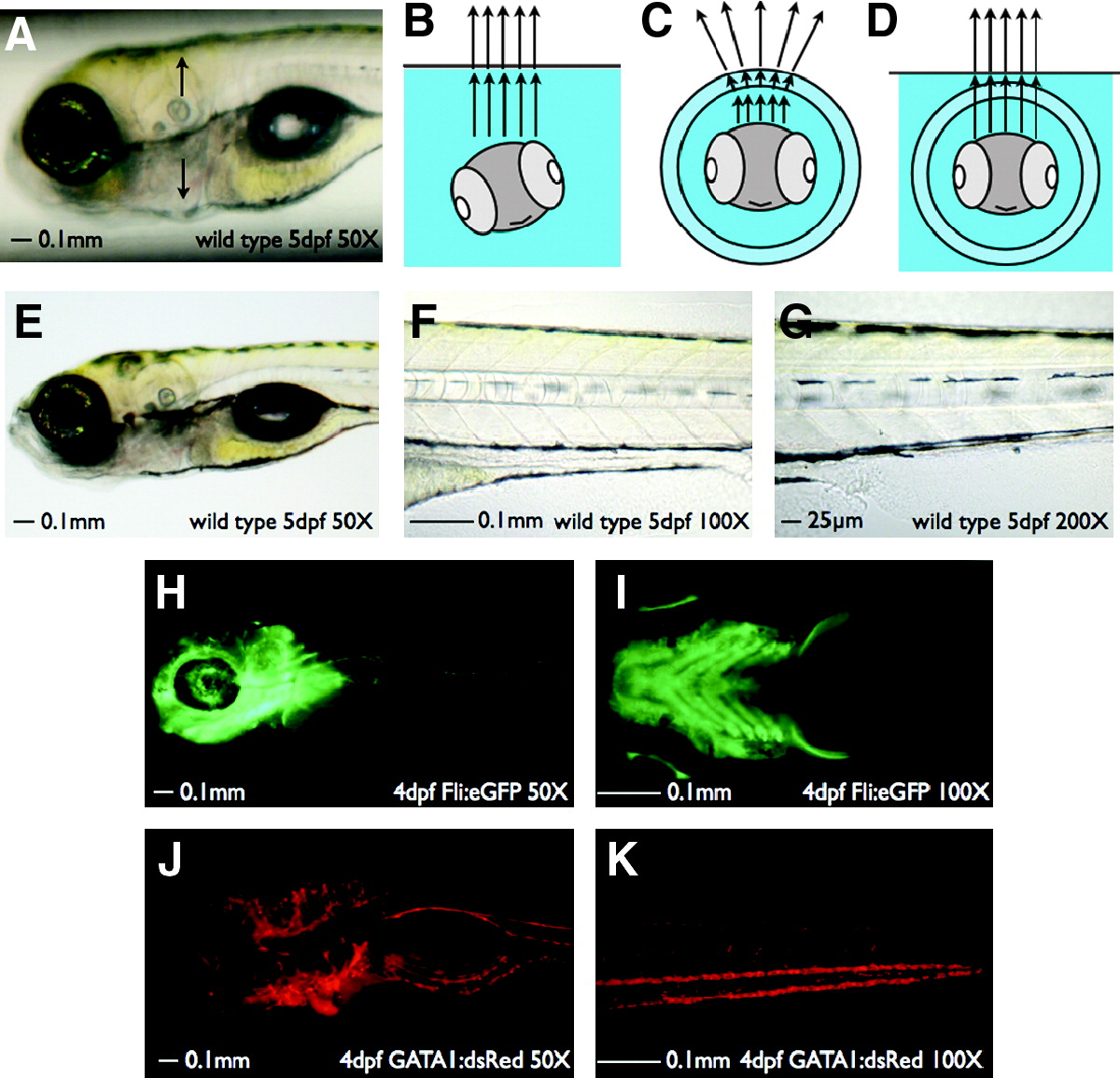Fig. 2 Specimen in a Corrected Optical Rotational Enclosure (SCORE) imaging of living animals. Zebrafish imaging is facilitated by use of a fluoro-carbon tube for housing. (A) Zebrafish images taken in polymer tubing produce a distorted image (arrows) due to the change in refractive index between the tubing and the air. Cartoon images representing a fish immobilized using traditional techniques on a skewed plane (B), a larval fish within a polymer tube without a corrective solution producing distortion (C), and within a corrective solution to produce a clear image (D). Fluorinated ethylene propylene (FEP) tubing produces a clear image at 50x (E ) (also see Supplemental Movie S1, available online at www.liebertonline.com), 100x (F), and 200x (G) of a 5 day postfertilization (dpf) larvae. A 5 dpf Tg(gata-1:DsRed)sd2 larvae in FEP tubing produces a clear background-free image at 50x (H) (also see Supplemental Movie S2, available online at www.liebertonline.com) and 100x (I). A 5 dpf Tg(fli:eGFP)y1 in FEP tubing produces a clear background-free image at 50x (J) (also see Supplemental Movie S3, available online at www.liebertonline.com) and 100x (K).
Image
Figure Caption
Acknowledgments
This image is the copyrighted work of the attributed author or publisher, and
ZFIN has permission only to display this image to its users.
Additional permissions should be obtained from the applicable author or publisher of the image.
Full text @ Zebrafish

